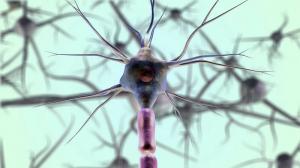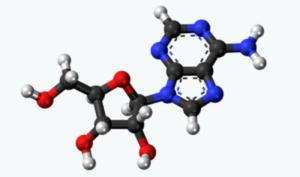Cryptomnesia: when your brain plagiarizes itself
It is quite common to believe that people's emotional aspects are unconscious and that, on the contrary, the world of cognition is conscious in nature. However, the truth is that cognitive processes such as decision-making and the retrieval of memories do not escape the logic of the unconscious.
The cryptomnesia is proof of it.
What is cryptocurrency? Starting with an example
It is possible that in one of those dead time intervals that day-to-day is plagued with, it has come to mind, with hardly any intention a catchy tune that, after the first few seconds, you have developed until you compose in your imagination something that looks a lot like a complete musical piece, ready to be commercialized.
These cases are very frustrating for people who don't know how to put music on staves and don't even have the means to record the sound of the new composition on hand. Yet these same people have reason for optimism. They save themselves having to find out, later, that what seemed like an original melody is actually an overloaded and unnecessarily long version of the music that plays in a shampoo commercial.
Of course, these types of experiences are difficult to explain for someone who believes that our own memory has no secret for us because, being subject to the orders of our conscience, it cannot be governed by rules that are too capricious or beyond our control. If you are one of these people, you may be interested in reading about cryptomnesia, or hidden memory.
Memories falsely anchored in memory
The example of the musical melodies that you have just read is intimately connected with the cases of involuntary plagiarism that have come to be embodied in all kinds of albums and vinyls and from which not even some famous rock groups escape. Similarly, certain "evidences" about past life memories are not even cleverly concocted hoaxes. a group of people with a desire for prominence, but situations in which people who theoretically do not know certain information In the past, they have previously accessed this information, although they do not remember it and therefore are totally sincere about their beliefs.
In all these events a rule is fulfilled: there are memories that have apparently been forgotten to reappear confused with the present time.
All these cases and anecdotes are examples in which there is a phenomenon that we call cryptomnesia or, what is the same, hidden memory. In short, cryptomnesia is a psychological process by which memories are recovered as if they were experiences originals lived for the first time and that apparently have been forged directly in the thinking of the person who experiment. This recovered information is actually the one that corresponds to a memory that had been forgotten, although not completely.
Far above, cryptomnesia can be understood as the opposite of what is experienced during a Deja vu. If in the latter a new experience is lived as if it were a forgotten memory until that moment, in cryptomnesia there is a real memory that goes unnoticed by conscious mental processes for a time until it manifests again as a new experience.
Not everything is plagiarizing without more
What has been explained so far can give the false impression that cryptomnesia occurs in cases in which other people are accidentally plagiarized, as if the memories that pass through this false forgetfulness had to refer to the ideas of others or to experiences linked to the world Exterior.
The truth is that among the ways in which hidden memory is expressed, there can also be self-plagiarism. An idea or thought of your own is perfectly susceptible to passing under the cloak of cryptomnesia, although surely these cases will not be as frowned upon as the previous ones.
Cryptocurrency seen from the laboratory
Despite the fact that hidden memory has its raw material in the great variety of experiences to which we are subjected in our day by day, it is also possible to study cryptomnesia in a much simpler and more aseptic environment: the laboratory of experimentation. These investigations usually involve groups of volunteers who issue possible answers to a question that is posed to them.
In a second phase, the volunteers have to remember whether certain contributions are their own or not. In this context, it has been seen that cryptomnesia is relatively frequent, and it is not uncommon for many individuals become convinced that the ideas others have put forth a few minutes ago are his. Even It has been seen what the emotional state of people can influence the frequency with which these unconscious plagiarisms occur.
So, the next time you believe you have power over the processes that govern your memory, remember that both memory memory and the illusion of consciously controlling it are carried out by the unknown: your psychological processes hidden.
Bibliographic references:
- Brédart, S., Lampinen, J. M. and Defeldre, A. C. (2003). Phenomenal characteristics of cryptomnesia. Memory, 11 (1), pp. 1 - 11.
- Gingerich, A. C. and Dodson, C. S. (2012). Sad mood reduces inadvertent plagiarism: Effects of affective state on source monitoring in cryptomnesia. Motivation and Emotion, 37 (2), pp. 355 - 371.



